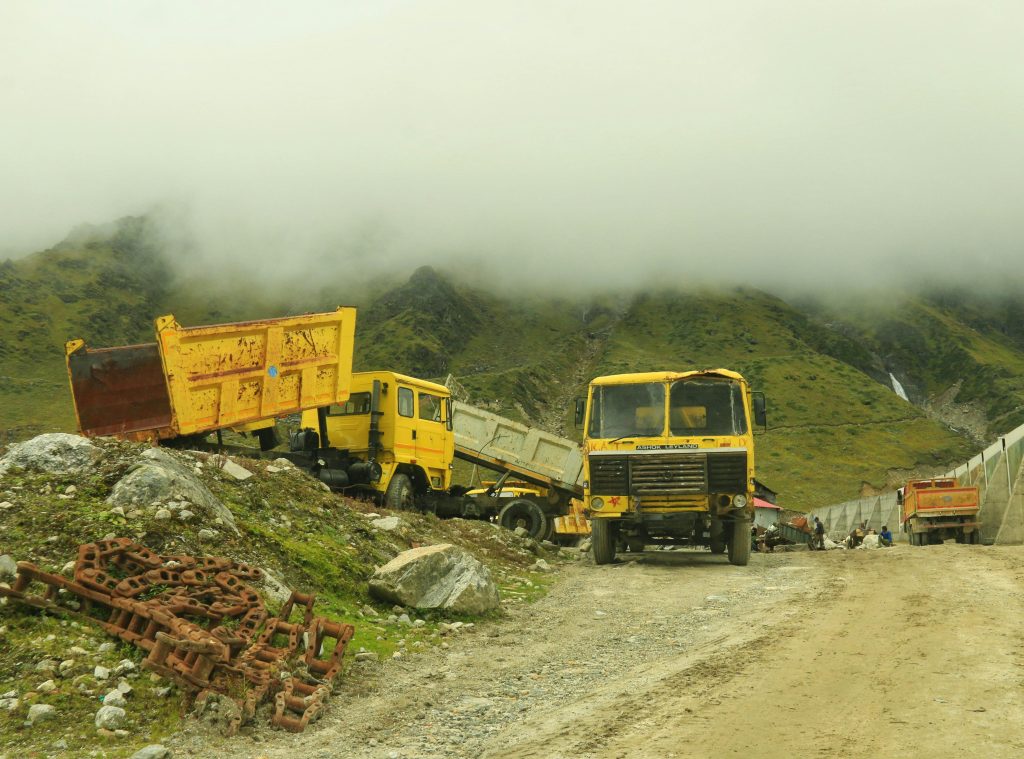Table of Contents
Heavy vehicles play a crucial role in modern economies, facilitating the transportation of goods, materials, and people across vast distances efficiently and reliably. This article explores the diverse types of heavy vehicles, their applications across various industries, technological advancements, environmental considerations, and their impact on global commerce and infrastructure development.

Types and Applications of Heavy Vehicles
Heavy vehicles encompass a broad spectrum of specialized machinery designed for specific tasks and industries. They include:
1. Trucks and Trailers: These are the backbone of logistics and freight transport, ranging from long-haul semi-trucks to dump trucks used in construction and mining for transporting bulk materials.
2. Construction Equipment: Heavy machinery such as excavators, bulldozers, cranes, and concrete mixers are essential for earthmoving, construction projects, and infrastructure development.
3. Agricultural Machinery: Tractors, combine harvesters, and irrigation equipment are vital for modern agriculture, enhancing efficiency in planting, harvesting, and managing large-scale farms.
4. Mining Vehicles: Heavy-duty vehicles like haul trucks, loaders, and drilling rigs are critical for mining operations, transporting minerals and materials from extraction sites to processing facilities.
5. Public Transport Vehicles: Buses and coaches provide essential transportation services for urban and intercity commuting, supporting public mobility and reducing individual vehicle congestion.

Technological Advancements in Heavy Vehicles
Advancements in technology have transformed heavy vehicles, enhancing safety, efficiency, and environmental performance. Key innovations include:
1. Telematics and GPS Tracking: Integrated systems provide real-time data on vehicle location, fuel consumption, maintenance schedules, and driver behavior, optimizing fleet management and logistics operations.
2. Electric and Hybrid Technology: Electric and hybrid heavy vehicles are gaining traction, offering reduced emissions and operational costs compared to traditional diesel engines. These vehicles are particularly suitable for urban environments and stringent emission regulations.
3. Autonomous and Semi-Autonomous Systems: Automation technologies enable features like lane-keeping assistance, adaptive cruise control, and automated braking systems, improving driver safety and operational efficiency.
4. Advanced Materials and Lightweight Design: Lightweight materials such as aluminum alloys and composites enhance vehicle durability and fuel efficiency without compromising strength or performance.

Environmental Considerations and Sustainability
The heavy vehicle industry faces challenges related to environmental impact, including emissions of greenhouse gases (GHGs) and pollutants, noise pollution, and resource consumption. Strategies for promoting sustainability include:
1. Emission Standards: Regulatory standards mandate the adoption of cleaner engine technologies and emissions control systems, reducing particulate matter and nitrogen oxides (NOx) emissions.
2. Alternative Fuels: Adoption of biofuels, natural gas, and hydrogen fuel cells offer cleaner alternatives to traditional fossil fuels, lowering carbon footprints and dependence on non-renewable resources.
3. Electrification: Electric and hybrid heavy vehicles contribute to reducing local air pollution and noise levels, especially in urban areas where emissions regulations are stringent.
4. Efficient Logistics and Route Optimization: Optimizing transport routes and adopting eco-driving practices minimize fuel consumption and emissions, enhancing operational efficiency and sustainability.
Economic Impact and Infrastructure Development
Heavy vehicles are integral to global commerce, supporting industries ranging from construction and mining to agriculture and transportation services. Investments in infrastructure projects, such as roads, bridges, and ports, rely heavily on heavy machinery for construction and maintenance. Economic benefits include job creation, increased productivity, and enhanced connectivity between regions and markets.
Challenges and Future Trends
Despite technological advancements, the heavy vehicle industry faces challenges such as:
1. Cost of Innovation: Developing and integrating new technologies into heavy vehicles can be costly, requiring substantial investment in research and development.
2. Regulatory Compliance: Adhering to evolving emissions standards and safety regulations adds complexity and operational costs for manufacturers and fleet operators.
3. Skills Shortage: Operating and maintaining heavy vehicles require specialized skills and training, prompting efforts to attract and retain qualified workforce.
4. Infrastructure Investment: Ensuring adequate infrastructure to support heavy vehicle operations, including charging stations for electric vehicles and maintenance facilities, is crucial for industry growth.
Conclusion
Heavy vehicles are indispensable assets in modern economies, supporting vital sectors and infrastructure development worldwide. From enhancing logistics efficiency to powering agricultural productivity and construction projects, these machines exemplify innovation and capability in meeting diverse industrial needs. As the industry continues to evolve, embracing sustainable practices and technological advancements will be pivotal in addressing environmental concerns and optimizing operational performance. Heavy vehicles not only drive economic growth but also pave the way for a more connected and sustainable future through responsible innovation and strategic investment in infrastructure.
3.5
